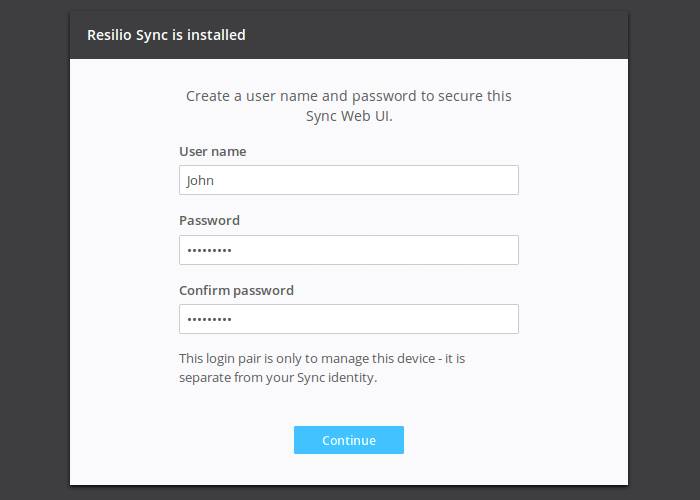

Why? Has it never existed at the destination or has it been deleted? Both cases look identical to rsync. It won't help to sync the other way round as that can lead to the same situation: A file exists at the source but not at the destination.
#LINUX SYNC FOLDERS HOW TO#
These two situations look identical to rsync thus it cannot know how to react correctly. Handling deletes is not easily possible as consider the following situation: A file has been deleted at the source, now how shall rsync know if that file once existed and has been deleted (in that case it must be deleted at the destination as well) or whether it never existed at the source (in that case it must be copied from the destination). Please note that this solution cannot handle deleted files. Without -u rsync would sync regardless if a file/folder is newer or not. Other answers here seem to overlook that sometimes the content of a file stays unchanged but its owner may have changed or its access permissions may have changed and in that case rsync would not sync the file which could be fatal.īut you also require -u as that tells rsync to completely leave any file/folder alone, in case it exists already at the destination and has a newer last modification date. -D Also sync special (not regular/meta) filesīasically whenever you want to create an identical one-to-one copy using rsync, you should always use -a as that's what most users expect to happen when they talk about " syncing".a (a for archive) is a shortcut for -rlptgoD: Rsync -au /remote/destination/* /local/source If the Preview option is not set some transfers may have been already started.You need to run rsync twice and I recommend to run it with -au: rsync -au /local/source/* /remote/destination After start you can click Stop to stop the synchronization.Click Start to begin the synchronization.The same local and remote filters must be enabled. Tick this option to apply the current enabled filters to the synchronization. The option Apply filter is available if you have filters enabled (see Filter Files and Directories).Tick Preview if you want to have a preview of the synchronization changes.
#LINUX SYNC FOLDERS PRO#
If not set FileZilla/FileZilla Pro only synchronizes files on the root directories.
#LINUX SYNC FOLDERS DOWNLOAD#
Transfer if sizes are different: upload or download if file sizes are different.Transfer if newer: upload or download if the source (local or remote) is newer.

Select the criteria to handle files that exist on both sides:.Local directory are downloaded, no files are deleted. Bidirectional: local files not on the server are uploaded, remote files not on the.


Sides are downloaded depending on the Same File option. On local system but on the server are removed locally, files are existing on both Remote to local: remote files not on the local directory are downloaded, files.Sides are uploaded depending on the Same File option. Local to remote: local files not on the server are uploaded, files on the serverīut not on the local directory are removed from the server, files existing on both.Enter both the local and remote directories that will be synchronized.In the main menu choose Transfer > File Synchronization.Use synchronization to compare and synchronize files and directories between your local computer and the remote server: Below you find a step by step guide, if you prefer you can watch our File Synchronization video tutorial.


 0 kommentar(er)
0 kommentar(er)
